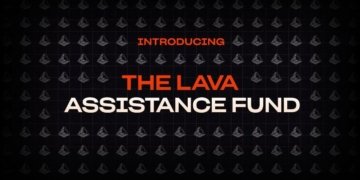
Elroy Cheo Explores Asia’s Unique Approach to Web3 Innovation
In recent years, Asia has emerged as a significant player on the global technology stage, particularly in the realm of Web3. At the Consensus Hong Kong 2025 conference, Elroy Cheo, a pivotal figure in the Web3 ecosystem and co-founder of ARC, presented his insights on what sets Asia apart in this rapidly evolving digital frontier. As the Web3 landscape continues to expand, understanding Asia’s distinct approach is crucial for anyone looking to navigate or participate in this new era of decentralized technology.
The Rise of Web3 in Asia
Asia has been at the forefront of technological innovation for decades, with countries like China, Japan, and South Korea leading in various digital domains. The advent of Web3—an umbrella term encompassing blockchain, cryptocurrency, and decentralized applications—offers a transformative opportunity that the region is keen to capitalize on. Several factors drive Asia’s leadership in Web3:
- Technological Infrastructure: Many Asian countries boast advanced technological infrastructure, enabling them to rapidly adopt and innovate around new technologies.
- Government Initiatives: Some governments in the region have launched programs to support blockchain and digital currencies, recognizing their potential economic impact.
- Entrepreneurial Spirit: The fast-paced environment in many Asian markets fosters a culture of entrepreneurship and innovation, which is expressive in the Web3 space.
Web3: A Catalyst for Economic Growth
One of the underlying reasons for Asia’s enthusiastic adoption of Web3 technologies lies in its potential as a catalyst for economic growth. As Elroy Cheo noted, blockchain technology and decentralized applications can significantly reduce transaction costs, enhance security, and boost efficiency in various sectors. From financial services to supply chain management, the impact of Web3 is pervasive and offers new avenues for business opportunities.
Key Sectors Impacted by Web3 in Asia
- Finance: The rise of decentralized finance (DeFi) has introduced alternative lending, investment, and insurance products, providing greater financial inclusion.
- Healthcare: Blockchain is being utilized for secure health records management, ensuring privacy and accurate data sharing.
- Supply Chain: With blockchain, supply chain processes become more transparent, enhancing tracking and reducing fraud.
Community-Driven Innovation
Cheo emphasized the significance of community in Asia’s Web3 ecosystem. Unlike traditional technology sectors, Web3 thrives on decentralized and community-driven innovation. Asian stakeholders, including developers, investors, and enthusiasts, actively participate in the governance of Web3 projects. Community engagement drives diversity in ideas and solutions, fostering a vibrant environment for innovation.
Community Initiatives Fuelling Growth
- Hackathons and Competitions: Regular events encourage collaboration and innovation, allowing developers to showcase blockchain and Web3 solutions.
- Educational Programs: Institutions and organizations offer courses and workshops to educate new talent and enhance existing skills in Web3 technologies.
Differentiators in Asia’s Web3 Approach
While the global Web3 landscape shares common technological underpinnings, Asia’s approach is distinctly characterized by its unique cultural and economic milieu.
Embracing Regulatory Clarity
Regulations can often be a double-edged sword in technology adoption, especially in emerging fields like Web3. However, Asia’s distinctiveness lies in its pursuit of regulatory clarity. Countries like Singapore and South Korea have established clear-cut guidelines around blockchain use cases, providing businesses with the confidence to innovate without fear of significant legal challenges.
Integration with Traditional Industries
Asia’s Web3 initiatives are frequently integrated with traditional industries, ensuring practical and scalable applications. This synergy is particularly visible in sectors such as banking, real estate, and logistics, where blockchain’s value proposition can be readily demonstrated.
The Future of Web3 in Asia
Cheo’s insights at the Consensus Hong Kong 2025 illustrate that the trajectory of Web3 in Asia is poised for accelerated growth. With governments showcasing a willingness to embrace innovations and an ever-increasing pool of skilled professionals, Asia is likely to continue setting standards in the global Web3 network.
Potential Challenges
Despite its promising future, the journey toward a fully-fledged Web3 ecosystem in Asia is not without challenges:
- Security Concerns: As with any digital innovation, security remains a critical concern that must be addressed to instill trust among users and investors.
- Scalability Issues: As blockchain networks grow, ensuring they can handle increased loads remains essential for widespread adoption.
The Path Forward
To mitigate these challenges and continue on a path of innovation, Cheo suggests that stakeholders must focus on robust cybersecurity measures, scalable solutions, and cross-border collaborations to share knowledge and resources.
Conclusion
Asia’s innovative foray into the Web3 domain is reshaping the global landscape. With a unique blend of technological infrastructure, government backing, and community-driven innovation, countries in this region are not only participants in the Web3 revolution but are also setting benchmarks for others to aspire to.
Elroy Cheo’s exploration of Asia’s approach to Web3 innovation provides valuable lessons and highlights the potential for this technology to bring about transformative changes. As the world looks towards the East for digital leadership, it becomes clear that Asia’s Web3 endeavors are just beginning to unfold.
“`


















